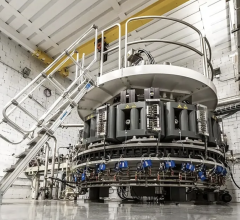
June 29, 2011 — A new study from the Intersocietal Commission for the Accreditation of Nuclear Medicine Laboratories (ICANL) suggests that while noncompliance with reporting standards is found in the majority of nuclear cardiology laboratories throughout the U.S., facilities participating in the ICANL accreditation process demonstrate an increase in compliance over time.
According to the study, published June 19 in the <i>Journal of Nuclear Cardiology,</i> a majority of facilities (57.2 percent) were noncompliant with more than one of the required reporting elements. The data also demonstrated that there were identifiable site characteristics that define which laboratories are more likely to be noncompliant. For instance, certain regions of the United States and facility settings were associated with greater noncompliance.
Most significantly, the study demonstrates that the ICANL accreditation process has a significant impact on quality. Researchers found that as laboratories apply in subsequent three-year cycles, there is an increase in the compliance of the generated report with the national standards. This continuous improvement illustrates that feedback from the accreditation review is integrated by the laboratories into their daily process, thus completing the quality cycle.
Lead author Peter L. Tilkemeier, M.D., notes that while the ICANL accreditation process has been in existence since 1997, this is the first time that the quality of nuclear cardiology reports has been evaluated for compliance with the <i>ICANL Standards.</i>
“As the final report is the single most important part of a nuclear cardiology study, it is very powerful to learn through this study that accreditation is contributing greatly to nuclear cardiology facilities’ ability to improve their reports,” Tilkemeier said.
In the recent study, site characteristics and the 18 elements of the ICANL nuclear reporting standards were evaluated in 1,301 laboratories applying for accreditation during a one-year period, beginning Jan. 1, 2008. Of the 18 report elements, the most frequent noncompliant items were: missing date of report (26.4 percent), separate stress and imaging reports (23.6 percent), missing the route of administration of radiopharmaceutical (22.8 percent) and no mention of the defect size, severity, type and location using standardized terminology (19.8 percent).
The ICANL is an instrument driving the improvement process by promoting uniform performance among laboratories with different characteristics such as study volume, laboratory type and geographic location notes Mary Beth Farrell, MS, CNMT, director of nuclear and PET accreditation for the Intersocietal Accreditation Commission (IAC).
“By identifying specific noncompliant reporting elements and site characteristics associated with noncompliance, we can now target educational activities to help laboratories improve the quality of reporting and facilitate successful accreditation,” Farrell said.
A follow-up editorial written by Frans J. Th. Wackers, M.D., Ph.D., FASNC, entitled “The Art of Communicating: The Nuclear Cardiology Report” was published June 25 in the ;Journal of Nuclear Cardiology. The editorial confirms the analysis revealing that the majority of laboratories applying for ICANL accreditation demonstrate noncompliance with reporting standards. In addition, the editorial emphasizes the significance of the nuclear cardiologist’s responsibility to provide comprehensive and clinically useful reports.
A nonprofit organization established in 1997, the ICANL is dedicated to promoting quality nuclear cardiology, nuclear medicine and PET imaging in the delivery of health care by providing a peer review process of laboratory accreditation. The ICANL is a member of the IAC, a nonprofit organization that provides facility accreditation programs for vascular, echocardiography, nuclear cardiology/nuclear medicine/PET, magnetic resonance (MR), computed tomography (CT) and carotid stenting. The IAC is comprised of six member divisions, each ensuring quality patient care and promoting health care within a specific medical specialty, all dedicated to one common mission.
For more information: www.icanl.org


 November 12, 2025
November 12, 2025 









